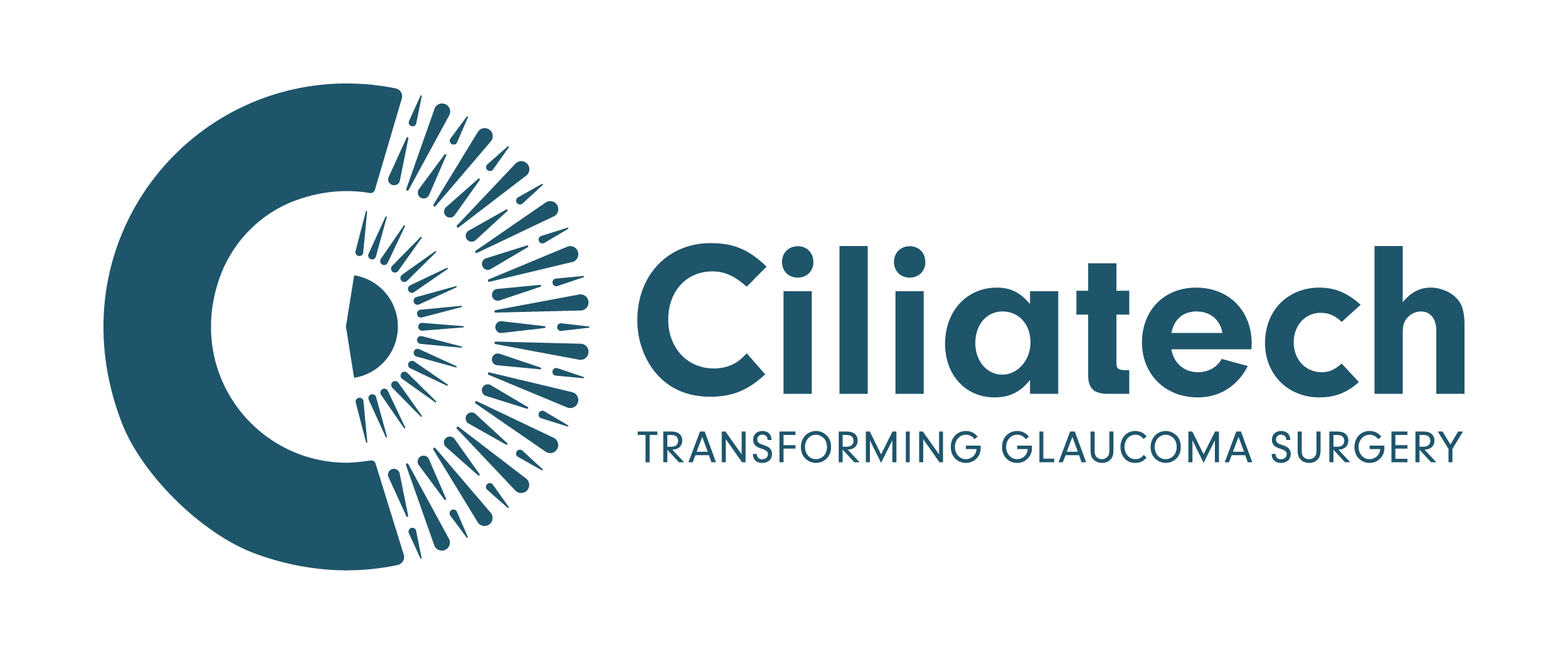Share this post:

Second-generation CID (Cilioscleral Interpositioning Device) makes cilioscleral surgical procedure, which leaves anterior chamber of eye untouched, less invasive and easier to perform
Chavanod (near Annecy), France, December 5, 2023 – Ciliatech, an ophthalmology medtech company developing a new class of implant to treat glaucoma durably, today announces the release of a new design of its CID (Cilioscleral Interpositioning Device), following the filing of additional patents strengthening its IP (Intellectual Property). CID is the unique glaucoma surgical device used in the cilioscleral technique to lower IOP (intraocular pressure) while preserving the anterior chamber of the eye, which in turn avoids serious medical complications, notably Endothelial Cell Loss (ECL) or a filtration bleb. The cilioscleral technique is also unique in its ability to treat the two main types of glaucoma: open angle or angle-closure (narrow angle).
The new patents protect modifications in the shape and geometry of CID, principally to further improve its perfomance and safety. This second-generation CID, currently in clinical trials, makes the cilioscleral technique less invasive and traumatic to the eye; the conjunctiva is better protected, and incisions are smaller.
“We are highly satisfied with the performance of our second-generation of CID. We redesigned it to provide an unequaled safety profile, and enhanced IOP reduction and maintenance, without medication over time,” said Philippe Sourdille, co-founder of Ciliatech and inventor of CID. “The new CID improves the very positive results we already achieved with our first-generation device across all aspects: performance, safety, surgical technique and post-op medication. This shows that Ciliatech has progressed in understanding the key underlying mechanisms monitoring aqueous humor circulation. We are identifying important parameters that leverage clinical outcomes. This is the CID design we will file for CE marking and will introduce to the market in 2025.”
Ciliatech secured patents on substantial revisions to the shape of the CID implant to improve both the water collection from the anterior chamber and its circulation down to drainage channels. The overall size was also slightly modified to allow smaller incisions and further reduce the invasiveness of the procedure.
CID offers strong IOP reduction
Preliminary results in a 12-month clinical study (SAFARI III) of 57 patients fitted with the new design have shown that this second-generation CID tends to deliver better IOP control, 13.9mmHg compared to 15.1mmHg in earlier studies (SAFARI I & II) using the first-generation model. Ciliatech says that this is significant, particularly when post-op IOPs are already in the low teens. In the SAFARI III 12-month results, more than 85% of patients reported being medication free.
For surgeons, this new model makes the cilioscleral procedure quicker (less than 15 minutes) and easier to perform, further reducing the learning curve. CID can be used similarly to a MIGS (Minimally Invasiveness Glaucoma Surgery) device in patients with open angle glaucoma. Unlike MIGS, it can be used to treat primary angle closure glaucoma, where patients have a two-fold greater risk of vision loss during their lifetime, without the need to remove the lens.
“With stronger IOP reduction, this second-generation CID may also be beneficial for more advanced glaucoma cases, helping a larger number of patients to postpone the need for traditional incisional approaches,” said Olivier Benoit, CEO of Ciliatech.
About CID (Cilioscleral Interpositioning Device)
Ciliatech’s CID is a non-resorbable implant which remains in place for the patient’s lifetime. It is a single piece of 26% hydrophilic acrylic, a raw material widely used in the manufacturing of intra-ocular lenses, which ensures long-term biocompatibility. The device consists of a specifically designed 6mm large, 3.5mm wide and 500µm thick plate. The anterior edge contains several contact points aimed at adapting to the natural variation of patient-to-patient iris diameter. The face, in regard to the ciliary body, is smooth, to avoid traumas, while the one facing the sclera is designed to maximize the aqueous circulation to the choroid and the sclera-conjunctival vessels.
How CID is applied
In a CID procedure, the surgeon only needs to make two full thickness scleral incisions, then pull the device below the sclera and following that, suture tight the incisions to avoid conjunctival filtration. The conjunctiva is spared. It is only incised locally, on top of the scleral incisions.
About Ciliatech
Ciliatech, a medtech company specialized in ophthalmology, is developing a new class of implant to address the increasing need to treat glaucoma durably and with zero adverse effects. Glaucoma affects 80M people per year worldwide. The company’s groundbreaking concept CID (Cilioscleral Interpositioning Device) is the first implant in the industry to reduce intraocular pressure (IOP) without penetrating the anterior chamber or creating subconjunctival filtration – critical criteria that overcome the most serious complications and shortcomings of other glaucoma surgical techniques. As CID is embedded between only two areas of the eye (uniquely between the ciliary body and the sclera), it offers the unparalleled advantage of unlocking the natural uveoscleral pathway without altering the anterior segment of the eye.
Founded in 2017 by ophthalmic surgeon and inventor Philippe Sourdille, and Olivier Benoit, a veteran engineer and biotech entrepreneur, Ciliatech recently launched a fourth clinical trial (SAFARI IV) on its second-generation implant. The company is located near Annecy, France, and to date has raised €6M ($6.5M) in financing.
To download documents, you can right-click on the links above and chose « Save link as… »


